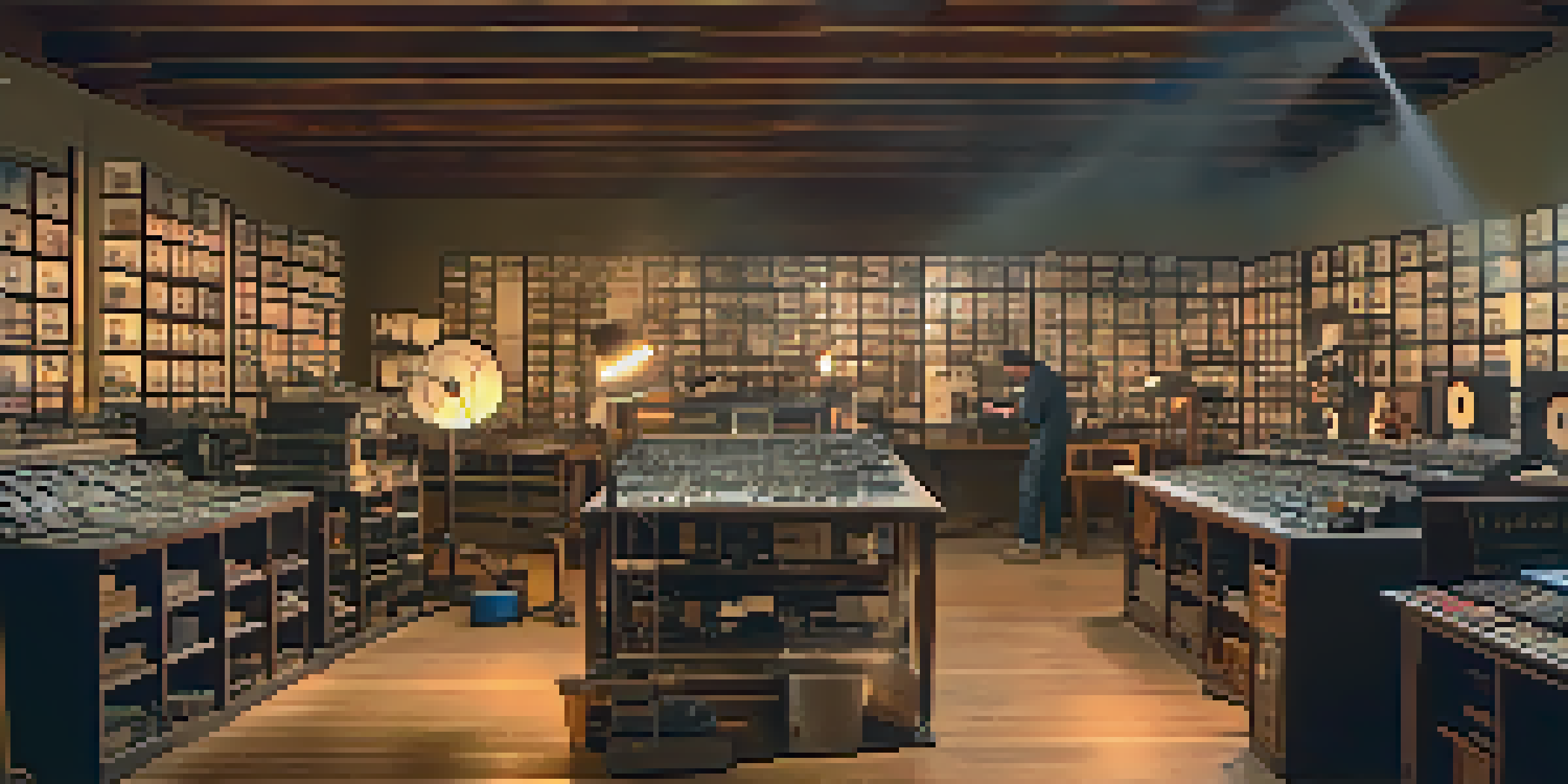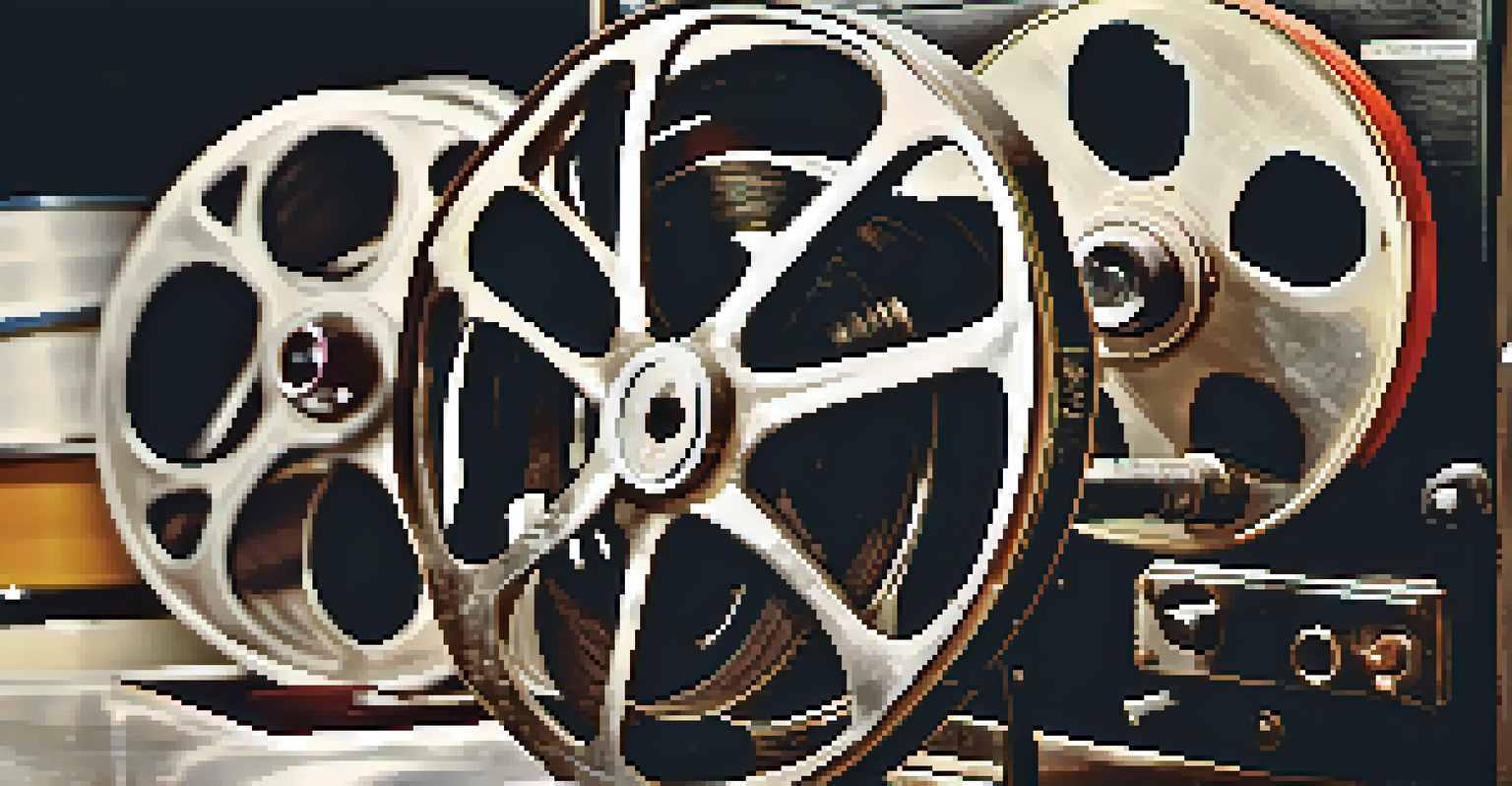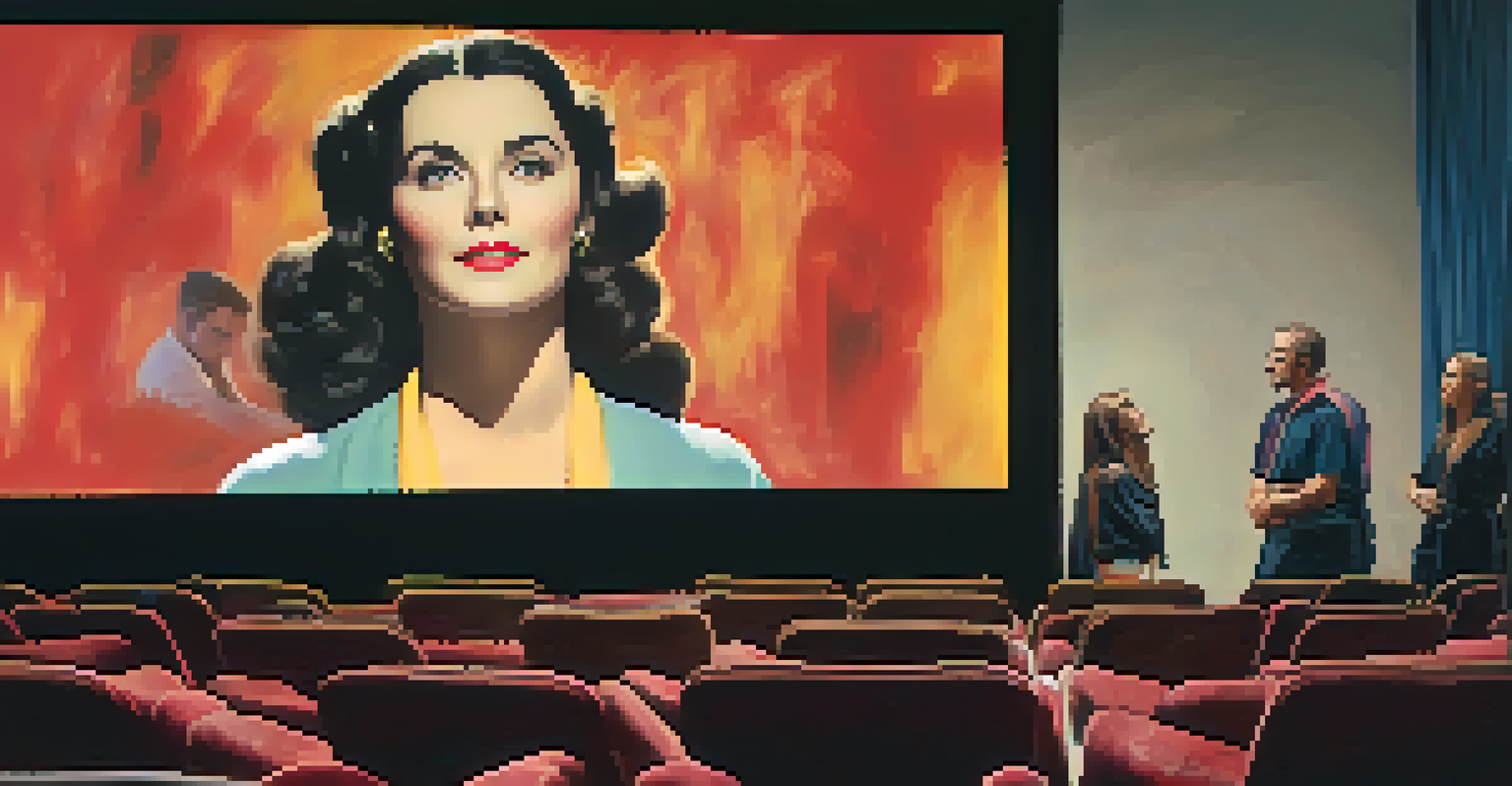The Role of Film Restoration in Preserving Hollywood's Legacy

Understanding Film Restoration and Its Importance
Film restoration is the process of repairing and preserving aging films to ensure they remain viewable for future generations. This involves cleaning, repairing, and enhancing the visual and audio quality of films that may have deteriorated over time. By restoring classic films, we not only maintain their aesthetic value but also safeguard cultural heritage.
Film restoration is not just about bringing back the past; it's about preserving the stories that shape our culture.
Imagine finding a beloved family photo that has faded over the years. Just as you would restore that photo to capture a treasured moment, film restoration revives cinematic gems that tell stories of our past. The importance of this process cannot be overstated, as it allows audiences to reconnect with the art of storytelling in its original form.
In an era where digital technology reigns, the tactile experience of film becomes more precious. Restoration helps to bridge the gap between modern audiences and the historical context of early cinema, reminding us of the artistry and creativity that shaped Hollywood.
The Techniques Behind Film Restoration
Film restoration is a meticulous process that employs various techniques to bring old films back to life. One common method is digital scanning, where films are converted into high-resolution digital formats, allowing for detailed analysis and correction. Additionally, color correction and audio restoration play crucial roles in enhancing the overall viewing experience.

Think of film restoration as a chef carefully preparing a gourmet dish. Just as a chef selects quality ingredients and refines flavors, restorers choose the best techniques to revive a film’s essence. Each step is vital to ensure the final product retains its original charm while being accessible to contemporary audiences.
Importance of Film Restoration
Film restoration preserves aging films, ensuring their aesthetic and cultural significance for future generations.
Moreover, technology has evolved significantly, enabling restorers to tackle even the most challenging projects. With advanced software and tools, they can remove scratches, stabilize shaky footage, and even recreate lost soundtracks, ensuring that the film feels as vibrant as when it first premiered.
The Cultural Significance of Restored Films
Restored films serve as cultural artifacts, providing insight into the social, political, and artistic landscapes of their time. They offer viewers a window into the past, sparking conversations about history and the evolution of cinema. This cultural significance is what makes film restoration not just a technical endeavor but a vital part of our collective memory.
Every film restored is a bridge to the past, reminding us of the artistry that has influenced generations.
For instance, films like 'The Wizard of Oz' and 'Casablanca' have been restored to reveal their original brilliance. These films not only entertain but also reflect the societal values and norms of the era they represent. By restoring them, we allow new generations to appreciate the artistry and messages embedded within.
In this way, film restoration plays a crucial role in fostering an ongoing dialogue about our history and culture. Each restored film becomes a touchpoint for audiences to explore the themes that resonate across time, bridging gaps between generations.
Major Film Restoration Projects in Hollywood
Several high-profile restoration projects have garnered significant attention in Hollywood, highlighting the importance of preserving cinematic history. For example, the restoration of 'Metropolis,' Fritz Lang's iconic 1927 sci-fi masterpiece, revealed lost scenes that transformed our understanding of the film. Such projects not only restore films but also enrich the narrative surrounding them.
Another noteworthy project is the restoration of 'Gone with the Wind,' which underwent extensive work to enhance its visual quality while maintaining its historical context. These endeavors not only breathe new life into beloved classics but also attract new audiences who may not have experienced these films in their original glory.
Techniques in Film Restoration
Meticulous techniques like digital scanning and color correction are essential in reviving classic films while maintaining their original charm.
These major projects illustrate the ongoing commitment of studios and organizations to preserve cinematic heritage. They showcase how film restoration can revitalize interest in classic films, ensuring they remain relevant in today's fast-paced entertainment landscape.
The Role of Technology in Film Restoration
Advancements in technology have revolutionized the field of film restoration, making it more efficient and effective. Digital tools allow restorers to address issues that would have been nearly impossible to fix in the past. High-definition scanning and sophisticated software enable detailed corrections, ensuring that restored films retain their original quality.
Consider the role of artificial intelligence (AI) in this process; AI algorithms can analyze footage, identify imperfections, and suggest enhancements. This not only speeds up the restoration process but also enhances the accuracy of the work being done. As technology continues to advance, the possibilities for restoration are virtually limitless.
Through these technological innovations, the film industry can preserve its legacy while adapting to contemporary viewing habits. This fusion of art and technology creates a dynamic landscape for film restoration, ensuring that classic films remain accessible and engaging for modern audiences.
Challenges Faced in Film Restoration
Despite the advancements in technology, film restoration comes with its own set of challenges. Many classic films suffer from severe damage due to poor storage conditions or the passage of time, making restoration a daunting task. Restorers often face difficult decisions about how much to alter a film while preserving its authenticity.
Imagine trying to repair an antique piece of furniture; you want to restore its beauty without losing its character. Similarly, restorers must balance enhancement with authenticity, ensuring that the essence of the film is honored. This delicate balance can lead to spirited debates among filmmakers, historians, and audiences alike.
Future of Film Restoration
The future of film restoration is bright, with increasing resources and streaming platforms helping to keep classic films relevant and accessible.
Additionally, funding can be a significant barrier, as restoration projects can be costly and time-consuming. Securing financial support often becomes a critical step in the process, as many films have limited commercial appeal. Despite these challenges, the commitment to preserving cinematic history remains strong.
The Future of Film Restoration in Hollywood
As the film industry continues to evolve, the future of film restoration looks promising. With increasing awareness of the importance of preserving cinematic history, more organizations are dedicating resources to restoration projects. This commitment ensures that classic films won’t fade into obscurity and continue to be celebrated.
Moreover, the rise of streaming platforms has created new opportunities for restored films to reach wider audiences. As these platforms prioritize classic content, restored films can find a new life in the digital age, allowing them to connect with viewers who may have never seen them in theaters.

The future holds exciting potential for film restoration, as emerging technologies and a growing appreciation for cinematic heritage drive the industry forward. By continuing to invest in these projects, we can ensure that Hollywood's legacy remains vibrant and accessible for generations to come.